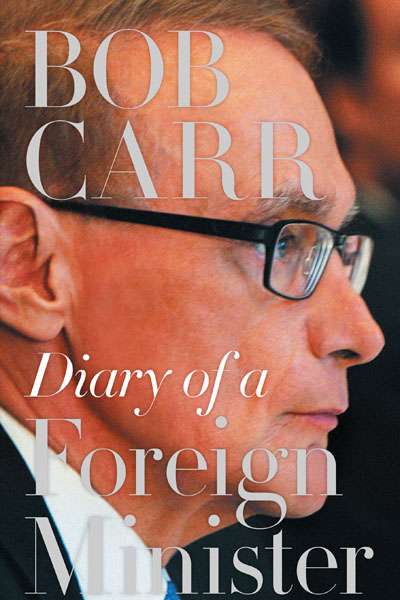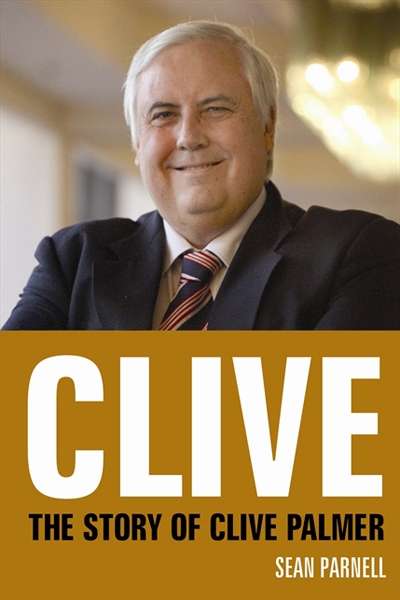Australian Politics
Power Failure: The inside story of climate politics under Rudd and Gillard by Philip Chubb
Speaking about the process of painstakingly researching the ‘terrible mistakes’ made on climate policy by the Rudd and Gillard governments over the six years of their existence, Philip Chubb told an audience at the Wheeler Centre that he ‘almost exhausted [himself] with gloom’. Indeed, this important book, which covers the Icarian trajectory of climate policy through Labor’s years in power, is hardly cheerful. Rather, Chubb hopes that the documentation and analysis of the many poor decisions will help legislators to overcome the challenges of implementing significant but controversial reforms in the future.
... (read more)Gravity by Mary Delahunty & Rudd, Gillard and Beyond by Troy Bramston
Gough Whitlam may not have been one of the Australian Labor Party’s greatest prime ministers, but, since his defenestration by Governor-General John Kerr in 1975, he has been embraced as one of the ALP’s great martyrs. Kerr’s dismissal of the Whitlam Government galvanised the Labor movement. To Labor eyes, Kerr was Pontius Pilate and Whitlam the slain Messiah. New followers – many of them, like Whitlam, university-educated progressives – joined the ALP. New ideas were aired through policy think-tanks such as the Labor Resource Centre, headed by Jenny Macklin, a future federal deputy leader. Out of that angst and rage, a new ALP was forged. Labor was no longer a troglodyte party ruled by factional warlords and sectarian hatreds. It was a modern progressive movement hell-bent on winning and wielding power. After all, as Whitlam famously said to an ALP State Conference in Melbourne in 1967, ‘Only the impotent are pure.’
... (read more)Don Dunstan, Intimacy & Liberty: A political biography by Dino Hodge
When I was commissioned to write this review, I assumed that this book would be a conventional political biography. I looked forward to reading about Dunstan’s career as premier of South Australia (1967–68 and 1970–79), as his record of achievements showed that our states and territories have the potential to be powerful players in social and cultural reform. However, the focus of Dino Hodge’s intriguing book is Dunstan the man, with an emphasis on the way in which his personal beliefs and ambiguous sexuality influenced his political life and legacy. Don Dunstan, Intimacy and Liberty makes a solid contribution to our understanding of Dunstan and the blurring of his private and public life, fanned partly by the media, but also, sometimes inadvertently, by the man himself.
... (read more)That Sinking Feeling: Asylum Seekers and the search for the Indonesian Solution (Quarterly Essay 53) by Paul Toohey
Do the ends always justify the means? And if the boats really have stopped coming, should we see the death of Reza Berati and the suffering of thousands as the collateral damage of a successful policy?
Paul Toohey’s panoramic sweep of this human, ethical, and political terrain begins with a visit to Cisarua, a small resort town in the mountains south of Jakarta that has become a major centre for people seeking asylum in Australia. Some are awaiting the outcome of formal applications for refugee status. Others are preparing to risk a boat. It is July 2013, two months before the federal election. Toohey spends time getting to know people, listening to tales of their journeys and, later in the essay, talking to survivors plucked from the ocean after a boat is lost at sea. If for no other reason, Toohey’s essay should be read for this; as a powerful, necessary reminder that ‘asylum seekers’ have stories, loves, fears, names, and faces.
... (read more)‘Dear Dr Blewett, I am writing to you ... concerning your intention to publish the diary you kept during the first Keating Government ... Whether any legal action, criminal or civil, is initiated would be entirely a matter for the Commonwealth government and relevant authorities ...
... (read more)Protests, Land Rights and Riots: Postcolonial struggles in Australia in the 1980s by Barry Morris
Protests, Land Rights and Riots examines indigenous politics in New South Wales in the 1980s. The discussion focuses on several protests, including the infamous 1987 ‘Brewarrina riot’, which followed the death of a young Aboriginal man in police custody, as well as a 1990 demonstration against amendments to the Aboriginal Land Rights Act 1983 (New South Wales). Morris, an anthropologist, provides the background to these and other events, and captures the tensions that characterised indigenous politics at the time, as well as the post-colonial ‘fantasies’ and ‘anxieties’ that infused the broader society around its bicentenary.
... (read more)The Gillard Governments: Australian Commonwealth administration edited by Chris Aulich
The prime ministership of Julia Gillard attracted an immense amount of media attention, not least because of the novelty of a female leader aspiring to embody the values and dreams of the Australian people. As opposition to her policies and style grew, Gillard as the government figurehead was at times subjected to extremist protests that used her gender as a weapon. Gillard’s prime ministership and perceptions of female power in contemporary Australia are issues explored in various chapters of The Gillard Governments, though not as extensively as its back-cover blurb would have us believe. The contributors to this edited volume are more interested in understanding the government’s policy development, administration and machinery of government than in the prime minister and her individual challenges.
... (read more)An Unqualified Success: The extraordinary life of Allan Percy Fleming by Peter Golding
In 1939 President Roosevelt nominated the poet Archibald MacLeish to be the Librarian of Congress, replacing Herbert Putnam, who had held the post since 1899. MacLeish had not previously been employed in a library. American librarians reacted to the news with outrage and disbelief, with one of their leaders claiming that he could no more think of a poet as the Librarian of Congress than as the chief engineer of a new Brooklyn Bridge. Roosevelt was unmoved by the protests and petitions, and MacLeish duly took up the position. He held it for less than five years, but in that time he achieved a major reorganisation of the Library, broadened its research and cultural roles, and made some astute staff appointments, including two of his successors.
... (read more)For the True Believers: Great Labor speeches that shaped history edited by Troy Bramston
Gough Whitlam’s famous words during his impromptu speech after the Dismissal in 1975 remain a potent symbol of the excitements and turbulence of the Whitlam era. As Troy Bramston’s collection of ALP speeches since 1891 reminds us, political speeches can capture a national mood or sentiment at a particular time in history. Indeed, a carefully crafted set of words can become a treasured part of our national self-image. They can also boost or destroy a politician’s reputation. In an age when the media has become uncritically obsessed with gaffes, Twitter banalities, polls, and sound bites, it is worth remembering that a good speech can elevate the national conversation and appeal to our better instincts.
... (read more)Even the most seasoned political observers would have been surprised at the Palmer United Party’s triumph at the federal election, which saw it claim three seats in the Senate. Was it a stroke of luck or the work of a remarkable political strategist? In any case, the political fate of the PUP’s founder remains undecided ...
... (read more)










